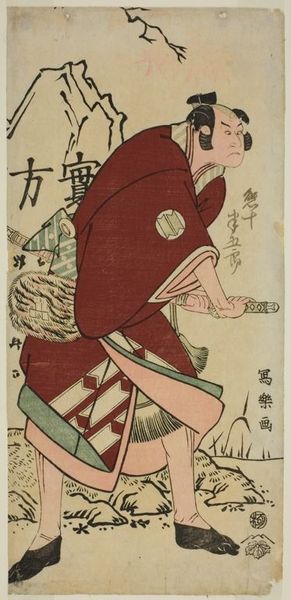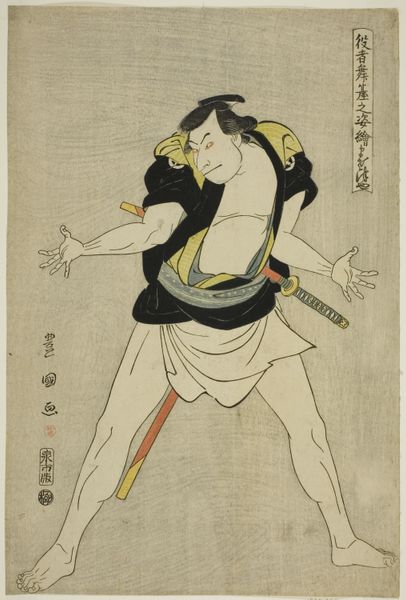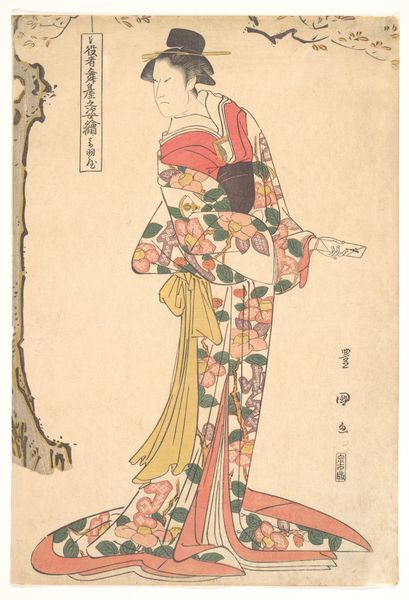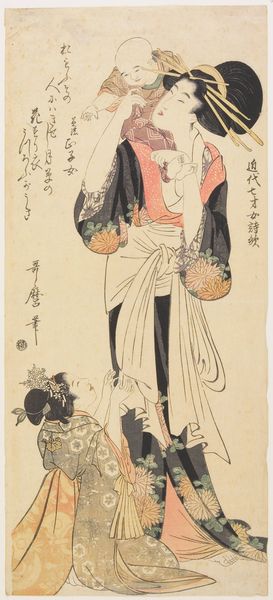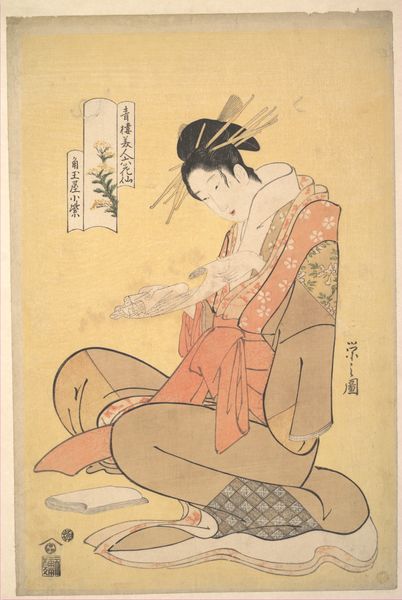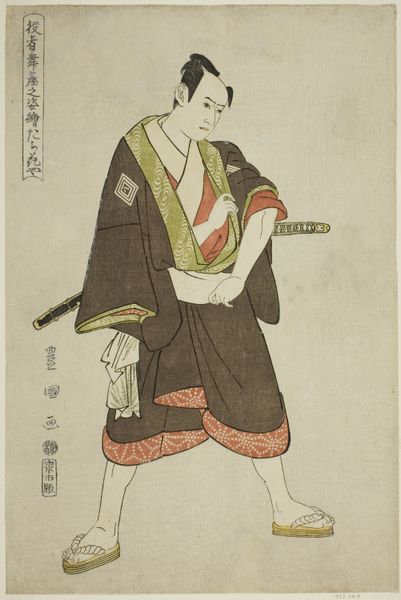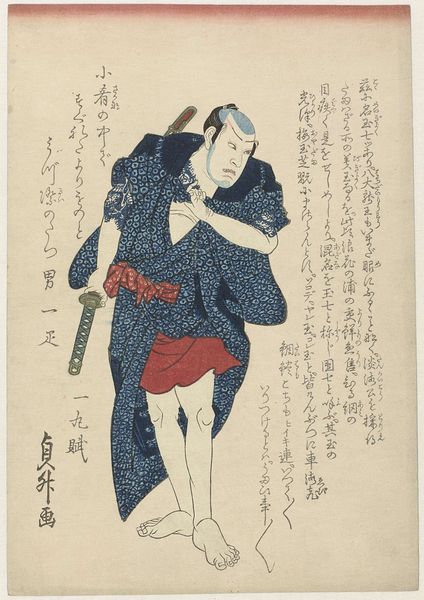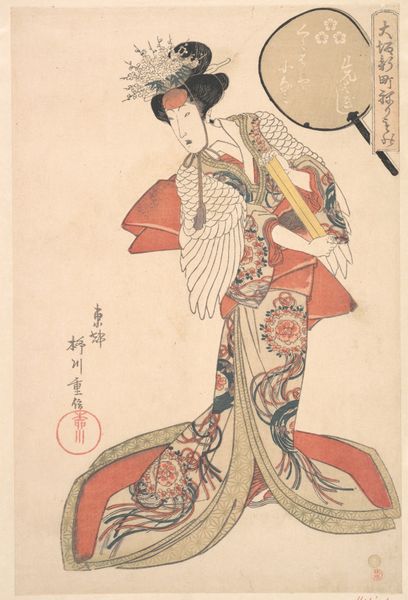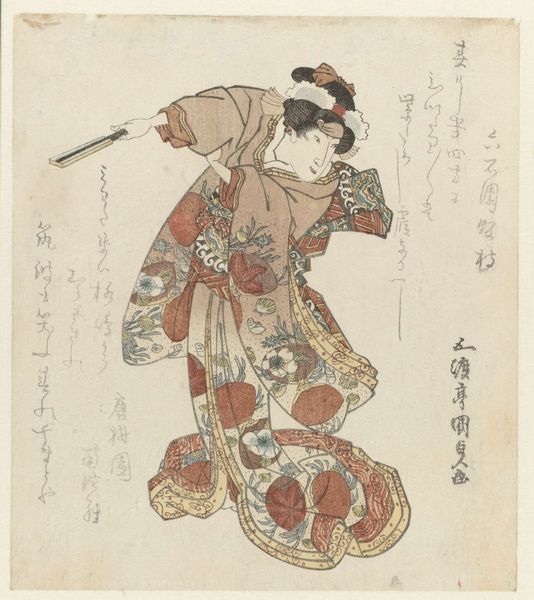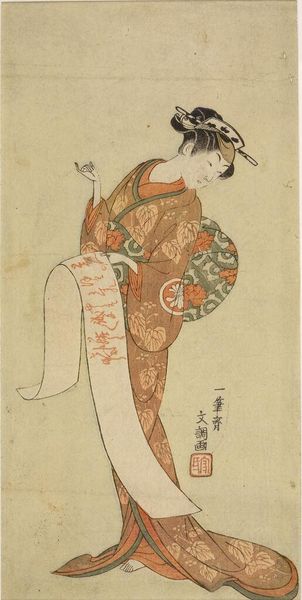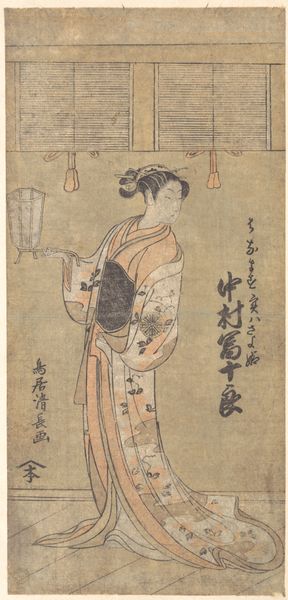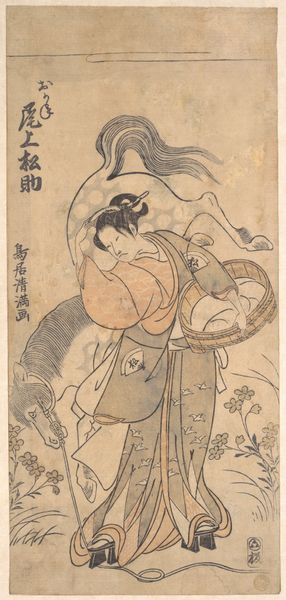
The actor Arashi Ryuzo later known as Arashi Shichigoro 18th - 19th century
0:00
0:00
print, woodblock-print, woodcut
#
portrait
# print
#
asian-art
#
ukiyo-e
#
japan
#
figuration
#
woodblock-print
#
woodcut
Dimensions: 14-1/8 x 9-9/16 in. (35.9 x 24.3 cm)
Copyright: Public Domain
Curator: Ah, let's spend a moment with this intriguing 18th or 19th-century woodblock print from Japan. Utagawa Toyokuni I created this striking image of "The actor Arashi Ryuzo later known as Arashi Shichigoro," and it resides here at the Met. Editor: Whoa! Okay, my first thought? Awkward. But also… brave? There’s something unsettling and honest about the posture, the gaze. It’s pulling me in despite myself. What a striking figure. Curator: Indeed! Notice how Toyokuni isn’t just presenting a pretty face. We see Arashi almost caught off guard. The exposed back and slightly contorted posture invite curiosity but there are deeper implications here tied to social status and performative identity. How might you consider these details given its theatrical background? Editor: That's the actor, right? So it makes sense, but even without knowing that I'd imagine a performative mask in play. What strikes me most are the angular contours on the limbs. The sharp lines of the arms, shoulders, legs—like they’re cut from thin ice. Curator: Absolutely. The 'ukiyo-e', or "pictures of the floating world", prints were quite popular during the Edo period, frequently depicting Kabuki actors like Arashi here. They offered glimpses into both the roles these performers played onstage and their persona offstage. Think about that emotional double-life: one as a man and one as his theatrical counterpart. Editor: Ooo, that’s layered! Makes you think, who are we *really* seeing? I imagine most would probably see this figure from the front but from this angle, he almost looks shy with embarrassment and uncertainty, not unlike the ones that everyone shares. Curator: Fascinating observation. See the mon—the crest—on his kimono? This design wouldn't be arbitrary; rather, it announces affiliations. Family, acting guild, perhaps even symbolic attributes connecting him to a character type within Kabuki. What might the exposed skin evoke? Consider purity, vulnerability, and even challenge to social convention. Editor: You’ve got my head spinning with possibilities! It all hinges on those little gestures, doesn’t it? The way he’s adjusting his robe, that almost apologetic gaze...Suddenly, it becomes way more relatable than some stoic portrait. We are seeing through a very particular and peculiar lens. Curator: That's the magic of art. We’ve seen how something seemingly unusual – this print's composition or choice of pose– gives way to thoughtful, meaningful explorations of the self. It echoes throughout centuries of creative thought. Editor: What a perfect little paradox! From initially unsettling, this guy suddenly whispers secrets. Amazing how images really capture the unspoken, no?
Comments
No comments
Be the first to comment and join the conversation on the ultimate creative platform.
